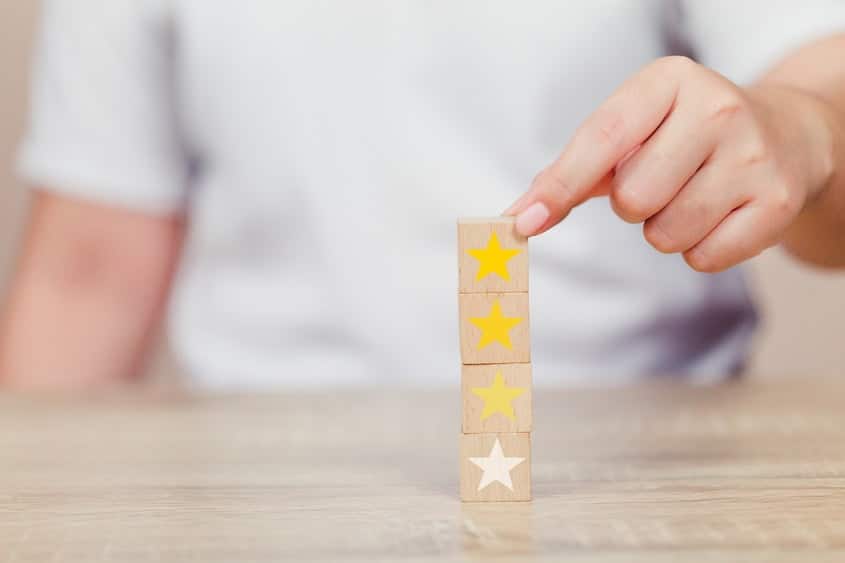In an ideal scenario, every company would have a team that works cohesively together with limited conflict; however, that’s rarely the case. Though a perfectly cohesive team is rare, it’s often the organizations that place a strong emphasis on the importance of team communication that can be most successful.
When proper communication is down, productivity tends to drop as well. This is because employees need to feel valued and informed to want to be engaged with their position at your company. If they don’t, they may start to look for a position elsewhere.
The most effective way to engage your employees in better team communication is to go over your current methodologies and evaluate the parts that may need to be changed. Remaining stagnant can prohibit your organization and its employees from advancing.
What is Effective Communication?
Effective communication is a concept that goes further than employees simply talking to each other each day. It’s about discussing ideas, collaborating, solving issues, and overcoming disagreements in the most beneficial manner for all parties involved.
Communication is a process that can occur between individuals or in teams of people, through both verbal and written methods. Though it’s important to remember that in a team setting there can be many different styles of communication, always remember to keep various personalities, cultures, and learning styles in mind for each member of your team. These variations can cause friction between team members which can adversely affect production rates. Poor communication has been shown to cost companies $37 billion in errors.
There are several methods of strategy and useful tools an organization can implement into their daily routine to encourage better team communication.
Effective Strategies
When working on your communication strategies, it’s best to learn the different communication styles that exist within your team before making any changes or adjustments. A great starting point for this process is to provide employees with a personality test upon hiring. Popular options for this include the Myers Briggs and DiSC tests. Once you know the various styles you’re working with, you can begin affecting change.
Be sure to utilize each individual’s strengths to bring out their unique talents and encourage them to put their voices to use. However, always be respectful that some employees prefer to voice their strengths in more introverted manners. Just remember this should never diminish their capabilities. Stephen Hawking once said, “Quiet people have the loudest minds.” Everyone on the team likely has a thought or opinion to share, some may just be more vocal about it than others. Find unique ways to highlight the voices of your quieter employees.
Transparent communication
Be open and transparent with everything you deliver to your employees and foster an environment where open dialogue is accepted. Keeping an open-door policy can go a long way in building trust amongst a team. Your employees should always be able to come to you with questions and concerns. Hosting open office hours during your open availability will show your commitment to providing your employees the time they need and value.
Your employees may have questions they won’t always want to ask in front of the rest of the team. One recent study revealed that 46% of surveyed employees stated they leave meetings rarely or never knowing what to do next. Always be prepared in team meetings to provide as much detail as possible and provide a guideline for the next steps.
Clearly stated company rules and policies
Set clear policies and guidelines for all employees regarding communication-related behaviors that will be tolerated and those that will not. Make sure these policies are laid out for easy references, like in an employee handbook. When your team comes across an issue with something that’s been said or done, you’ll need to be able to show the involved team members the policies you have set for these situations. It’s equally as important to follow through with repercussions for each employee in the same manner.
Host training sessions for communication and overcoming conflict in the workplace. This could be handled through the human resource department or through an external company you hire out to host an on-site training. Many of these companies also offer team-building activities that can increase your communication across departments in a more fun way.
Consistent feedback
Ongoing performance-based feedback is one of the greatest offerings a company can provide to an employee. It’s also important to seek feedback from employees on your own performance as well. It’s a desired trait of an executive and company as a whole to be able to recognize when you’re wrong and constructively use that information to instill change in your organization.

Feedback provides employees and managers with a clear direction on how they can improve upon themselves and their work. It’s been shown that 43% of highly engaged employees receive feedback weekly, but only 18% of less engaged employees do.
Employee recognition
Be sure to recognize your employees regularly. They deserve to be told when they are performing exceptionally well. Everyone appreciates being recognized and it only takes a brief moment to do so.

A great way to show your appreciation is to host a weekly company-wide meeting where coworkers and management can acknowledge the hard work and weekly successes of top performers. Sending a company-wide email or nominating an employee of the month are also valuable methods. When looking to recognize the team as a whole, offer fun incentives and activities periodically to give your employees a break and celebrate their commitment to their job.
Mentoring programs
Finally, mentor programs are another great way to engage employees of various backgrounds, diversity, and skillsets to connect with one another. This has proven successful for many of the biggest fortune 1000 companies.

In fact, of those surveyed from these companies, those who were enrolled in a mentor program were promoted five times more often than those who weren’t enrolled.
Useful Tools
There are several tools available to assist organizations in effectively encouraging better communication and affecting change. Every company should start by using one integrated communication channel for all. This can help deliver messages faster and easier. Using multiple channels can create confusion amongst the team. Additionally, it’s wise to have a platform that houses this information for convenient referencing whenever needed.
Workforce management software
Modern times have introduced us to streamlined cloud technology which can help companies establish a process that engages employees in effective communication and collaboration. Instilling workforce management software into your daily processes can help lead your company to a place where everyone works cohesively. This software can also help decrease the occurrence of miscommunication and employee error that’s often caused by gaps in the communication process.
Video conferencing platforms
When it comes to remote employees, communication can be more difficult. Using video conferencing tools will be your best asset in planning and hosting meetings for these team members. Though you could choose to communicate via email or chat, conference calls have a stronger ability to increase productivity. 87% of remote workers claim to feel more engaged with their team members when they can use video conferencing. This is likely because the time spent on a conference call is often much shorter than it would be via chat or email.
Mind mapping software
For working on projects with team members, including those in remote locations, our mind mapping software makes the process of increasing team spirit and collaboration amongst employees simple. With connected applications, employees can work collaboratively on the same documents to share valuable information within the same project. The ability to export and import documents helps project managers assign and review tasks so there is a limited risk of misunderstandings amongst employees.
Task organization programs
Furthermore, task organization apps can assist managers with increasing efficiency amongst their teams. These programs provide the necessary tools to easily break out tasks and objectives. It can also provide a clearer process of communication as to who’s in charge of what and when projects are due. Seeing the task and each of its components laid out can help facilitate task owners in bringing in other employees they may need assistance from.
Office visuals
Approximately 65% of people identify themselves as visual learners. Because of this, office visuals can be successful in spreading company-wide messages. Utilizing televisions and message boards that employees see as they walk into the building is useful for grabbing their attention. For remote employees who won’t be able to see these visuals, flyers, and videos can also be an effective means of communication. Social media can also be a great resource. Not only are these sites useful message platforms, but some companies even choose to set up separate internal accounts that highlight insights from employees as well as pictures of fun events and gatherings.
Encouraging better team communication takes time and dedication. It won’t happen overnight, and the process will be ever-evolving. As you onboard new team members, new communication styles will begin to arise. You must adjust your strategies and tools over time to best accommodate all members of the team. Exuding this level of care for your employees is what helps each of them want to remain and grow at your company.



